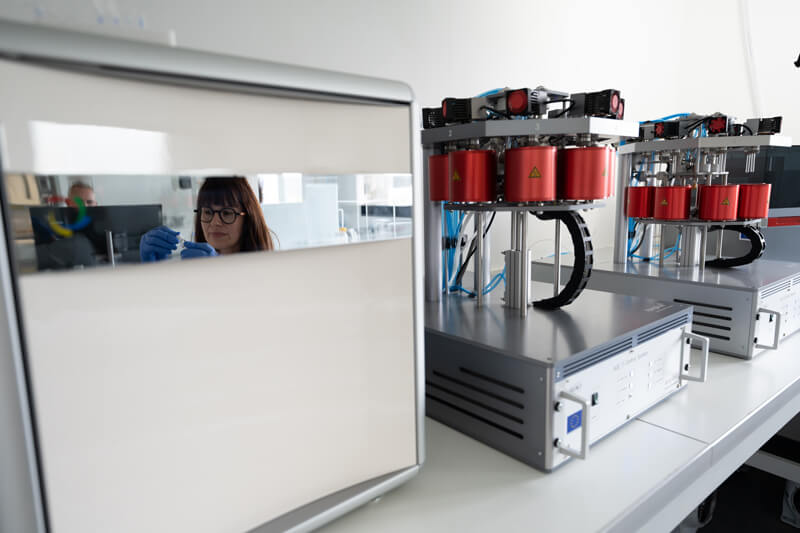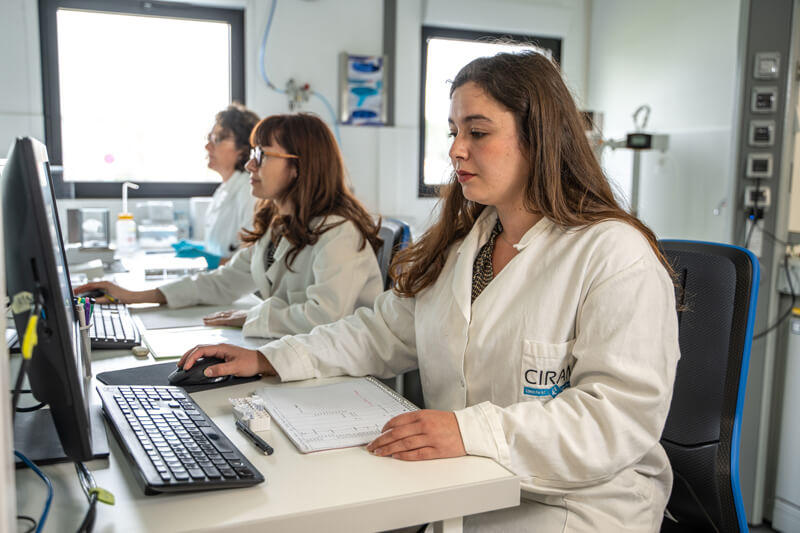
ISOTOPIC ANALYSES
Stable isotope analysis is increasingly used for archaeological issues. Along with carbon-14 dating, stable isotopes of carbon, nitrogen, sulfur, and strontium will provide important information on diets and population movements.
Isotopes analyzed in CIRAM laboratories
Stable isotopes are increasingly becoming fields of investigation for archaeometry. CIRAM scientists are analyzing the isotope ratios of carbon d13C, nitrogen d15N, sulfur d34S, and strontium 87Sr/86Sr on bones, teeth, ivory.
Other than differentiating land animals from marine animals, carbon, nitrogen, and sulfur isotopes will tell us about the dietary habits of ancient peoples. Strontium isotopes will be dedicated to the study of geographic origins.
The value of analyzing multiple isotopes
The CIRAM laboratories do more than just provide dating. Our scientists couple elemental and isotopic analyses to all carbon-14 dating. For bones, elemental analysis in general and the C/N ratio in particular will verify the quality of the collagen and thus reveal whether or not carbon-14 dating is relevant. The carbon concentration and d13C value will inform on the nature of the material; is it really a charcoal, for example.
Isotopic analysis is a real support to carbon 14 dating, as it allows to:
- Check the quality of the collagen
- Validate the nature of the materials
- Determine the marine or terrestrial origin

Mounts for isotope analysis
Based on the nature of the archaeological artifact, we will choose which part or component to analyze. The larger the corpus, the more relevant the results will be. Indeed, we should not consider the isotopic analysis of a single sample. The materials most suitable for stable isotope analysis are mainly bones and teeth.
However, isotope analysis is not limited to the study of organic materials. Carbon and oxygen isotopes, as well as strontium isotopes, are used to determine the origin of marbles. Indeed, it is the carbonate (CO3) part of calcite and it is the traces of strontium that are in calcium in the crystal lattice that we are interested in measuring isotopic ratios.

Carbon isotope analysis
In addition to carbon-14 dating, which allows dating, analysis of the ratio of carbon-13 to carbon-12 (d13C) will provide information on the nature of the plants. Indeed, plants with a C3 type of photosynthesis, such as woody trees, rice, cotton, wheat…, have a d13C lower than -20 ‰, when C4 plants, such as grass, corn, sugarcane, have a d13C between -10 and -20 ‰.
The isotopes are separated using an isotope ratio mass spectrometer (IRMS) coupled to an elemental analyzer (EA).
The study of stable isotopes of nitrogen
The study of stable isotopes of nitrogen is usually combined with that of carbon.
The combination of these two values will make it possible to specify the diet of an individual or animal, namely whether it was carnivorous, herbivorous or omnivorous, and whether its diet was terrestrial or marine in advantage. The presence of nitrogen will be characteristic of proteins.
Sulfur isotope analysis
Analysis of the ratio of sulfur isotopes 34 and 32 (d34S) is increasingly used to complement carbon and nitrogen isotopes. These studies help us understand the diets and movements of animals and humans during prehistoric and historic times.
Sulfur isotopes are also being used to explore the variability of terrestrial, marine, and freshwater diets. They are also used as indicators of environmental change.
The study of strontium isotope ratios
Strontium is a metal that is easily found in nature. Whether in ancient rocks or in soils. It is the assimilation by plants in the form of mineral salts that will make strontium isotopes interesting.
By studying the isotopic ratio of strontium 87 and 86 present in teeth and archaeological bones, it will be possible to define the geographical origin of individuals and to identify possible migrations.
However, the values of the 87Sr/86Sr ratio are very heterogeneous, even on limited perimeters. Therefore, only a study of a significant corpus will be relevant and it will be necessary to limit the investigations to only a few hypotheses.
>Discover other areas of CIRAM expertise:
